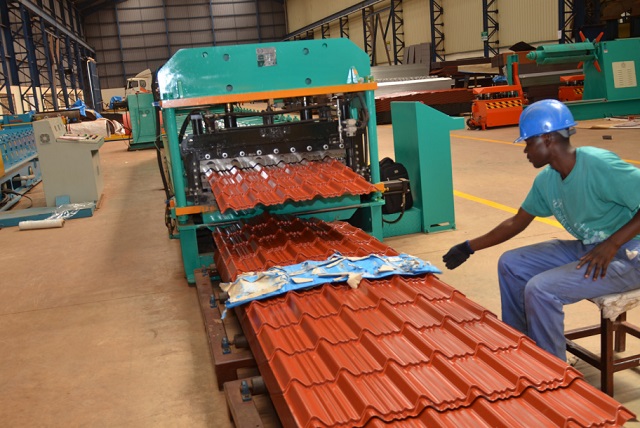
But private sector players are optimistic about the future
| THE INDEPENDENT | Uganda’s private sector activity continues to improve as the economy slowly recovers from COVID-19 pandemic hit but workforce continues to fall.
The latest Stanbic Purchasing Managers’ Index (PMI) released on Nov.03 indicates that Uganda’s private sector recorded a third successive monthly increase in business activity during October thanks to a return to normal operating conditions and increase in new orders, but companies were not hiring more workers during the period.
The economy, meanwhile, was buoyant in October characterized by increases in output and new orders and growth in purchasing activity.
The headline PMI rose to 54.6 in October from 52.5 in September above the threshold 50.0 reading that indicates a positive outlook.
“…employment continued to fall in October as some firms were reluctant to hire additional staff amid cost pressures,” reads the survey in part, “Workforce numbers decreased for the fifth month running, with employee expenses also down.”
Ronald Muyanja, the head of trading at Stanbic Bank Uganda said, both output and new orders increased for the third month running in October as the customer numbers improved and business conditions returned closer to normal.
“In both cases, growth was widespread across each of the five broad sectors covered by the survey,” Muyanja said.
According to the survey, rises in new orders encouraged companies to expand their purchasing activity for the first time in five months, in turn leading to an accumulation of inventories.
The survey, sponsored by Stanbic Bank and produced by IHS Markit, has been conducted since June 2016 and covers the agriculture, industry, construction, wholesale & retail, and service sectors. According to the latest findings, higher price pressures were reflective of increased costs for purchases including cement, food products and stationery as well as higher charges for electricity, fuel, and water.
Efforts by companies to keep on top of workloads were generally successful in October as signaled by a further reduction in backlogs of work.
Outstanding business has decreased in each month since the survey began in June 2016. Reductions in backlogs were widespread across the monitored sectors.
Purchasing activity returned to growth in October, thereby ending a four-months sequence of falling input buying. Respondents generally attributed higher purchasing to increases in new orders. Input buying rose in the agriculture, industry, and wholesale & retail categories, but decreased in the construction sector.
Meanwhile, companies reported a third successive monthly improvement in vendor performance at the start of the final quarter of the year.
Firms in the construction and wholesale & retail sectors were able to secure purchased items more quickly than in September, but agriculture and industry saw lead times lengthen.
In response to rising cost burdens, and as part of efforts to protect profit margins, firms increased their selling prices for the second month running.
Charges rose in the agriculture, industry, and wholesale & retail sectors, but fell in construction and services.
The prospect of further increases in new business supported ongoing confidence in the 12-month outlook for activity; close to 88% of respondents expressed optimism in the economy.
Economic experts are hopeful that once the country is fully reopened in January, more economic activity will be recorded, which will translate into job creation and related opportunities.
Bank of Uganda has maintained an accommodative monetary policy stance by keeping its policy interest rate – the central bank rate – at 6.5% to largely stimulate the uptake of financial products (loans) and support a rebound for private sector growth and the economy in general.
In its October Monetary Policy Report, BoU says, total private sector credit (net of revaluation) grew by 10.9% in the quarter to August 2021 from 9.2% in the quarter to May 2021.
According to BoU, a rebound of economic activity will be sustained by an
acceleration in private consumption, strong growth in external demand, a gradual return of tourism and foreign and private domestic investment in the oil sector.
First published in 2016 in Uganda, Stanbic’s PMI is a composite index, calculated as a weighted average of five individual sub-components namely New Orders (30%); Output (25%); Employment (20%); Suppliers’ Delivery Times (15%) and Stocks of Purchases (10%). Readings above 50.0 signal an improvement in business conditions on the previous month while readings below 50.0 mean deterioration.
****
 The Independent Uganda: You get the Truth we Pay the Price
The Independent Uganda: You get the Truth we Pay the Price



